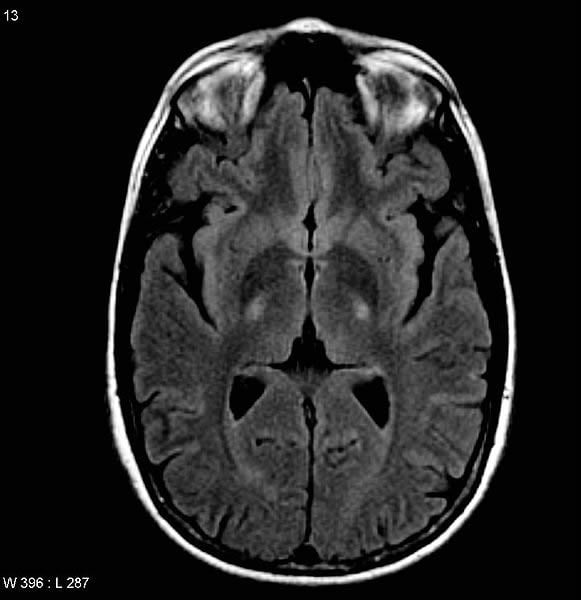Blocking molecules involved in ALS-drug resistance may improve how well ALS therapeutics work, suggesting that re-evaluation of drugs that appeared to have failed might be appropriate.
Amyotrophic lateral sclerosis (ALS), also known as Lou Gehrig’s disease, is a neurodegenerative disease that primarily kills motor neurons, leading to paralysis and death 2 to 5 years from diagnosis. Currently ALS has no cure. Despite promising early-stage research, the majority of drugs in development for ALS have failed. Now researchers have uncovered a possible explanation. In a study published November 20th in the Annals of Clinical and Translational Neurology, researchers show that the brain’s machinery for pumping out toxins is ratcheted up in ALS patients and that this machinery also pumps out medicine designed to treat ALS, thereby decreasing the therapeutic efficacy of the drug. The work showed that when these pumps are blocked, the drug becomes more effective at slowing the progression of the disease in mouse models.
“This mechanism that normally protects the brain and the spinal cord from damage via environmental toxins, also treats the therapeutic drug as a threat and pumps that out as well” says co-senior author Piera Pasinelli, Ph.D., associate professor of neuroscience and Co-Director of the Weinberg Unit for ALS Research at Thomas Jefferson University. “Blocking the pumps, or transporter proteins, improved how well the ALS drug worked in mice.”
“Drug resistance via these types of cellular drug-pumps is not new,” says co-senior author Davide Trotti, Ph.D., associate professor of neuroscience and Co-Director of the Weinberg Unit for ALS research at Jefferson. “In fact, drug companies routinely check novel compounds for interactions with these transporter proteins, but they typically check in healthy animals or individuals.” Because of the investigators’ background in pharmacological sciences and ALS research, examining the role of drug transporter proteins made sense. But rather than look at healthy mice, the researcher looked at how these interactions changed in mouse models of the disease over time.

In research published earlier, the group showed that the function of the pumps changed as the disease progressed in mice, with the pumps becoming more active as the symptoms became more severe. “The ALS brain and spinal cord may be trying to compensate for the disease by generating more of these pumps,” says Dr. Trotti. But it was unclear whether this increase would really impact treatment.
To address this question, the investigators led by Drs. Pasinelli and Trotti, tested in the mouse model of ALS the only drug approved for ALS treatment and used by patients, riluzole. Earlier work had shown that the drug loses its effectiveness in patients as the disease progresses, and overall the drug only prolongs survival of ALS patients by 3-6 months. The researchers also chose riluzole because they knew it interacted with two pumps, P-glycoprotein (P-gp) and breast-cancer resistant protein (BCRP — first discovered for its role in drug resistance in breast cancer). These two pumps can be selectively blocked by an experimental compound called elacridar that leaves other pumps in the brain unaffected.
The team treated mice with the combination of the ALS drug (riluzole) and pump-blocker (elacridar) and showed that the combination extended the life span of mice compared with those treated only with riluzole. Importantly, the combination also alleviated some of the symptoms, improving muscle-strength and other measures in mice.
Unlike most experiments in ALS mice, in which drugs are administered before the mice exhibit symptoms of the disease in an attempt to delay onset, Pasinelli and Trotti tested their hypothesis in a model that mirrored what patients actually experience, with treatment beginning when ALS symptoms become apparent. Treating ALS mice with riluzole when symptoms appear actually provides little to no benefit alone, but together with elacridar, showed marked improvements.
“The fact that elacridar is selective may explain why we didn’t see obvious side effects: other transporter proteins in the brain were still active and removing toxins. We simply plugged the ones that allowed riluzole to leak out,” said Pasinelli.
The finding may also explain why ALS drugs that appear to work initially, fail as the disease progresses: as the motor neurons become more damaged, the brain creates more pumps to try to remove the damage, also removing ALS drugs with greater efficiency than before.
“The research paves a way for improving the efficacy of an already ALS approved drug, if the findings hold true in human clinical trials,” says Dr. Pasinelli. “But more importantly it also sheds light on a basic pathological mechanism at play in ALS patients that might explain why so many treatments have failed, and suggests a way to re-examine these therapies together with selective pump-inhibitor.”
This work was funded by DOD W81XWH-11-1-0767 ; Landenberger Foundation; National Institutes of Health RO1-NS074886; National Institutes of Health F31-NS080539; MDA Developmental Award; Farber Family Foundation.
The authors report no conflicts of interest.
Contact: Edyta Zielinska – Thomas Jefferson University
Source: Thomas Jefferson University press release
Image Source: The image is credited to Frank Gaillard and is licensed Creative Commons Attribution-Share Alike 3.0 Unported
Original Research: Abstract for “Inhibiting drug efflux transporters improves efficacy of ALS therapeutics” by Michael R. Jablonski, Shashirekha S. Markandaiah, Dena Jacob, Ni J. Meng, Ke Li, Victoria Gennaro, Angelo C. Lepore, Davide Trotti and Piera Pasinelli in Annals of Clinical and Translational Neurology. Published online November 21 2014 doi:10.1002/acn3.141






